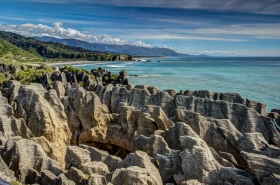The petition to Secretary Jewell reads:
“As one of the most important deciders on fracking, it’s vital that you fully understand the dangerous Halliburton Loophole, and other exemptions that the industry has carved out to pave the way for fracking. As long as gaping loopholes like this exist, the only sure way to protect our health and safety from fracking is to ban it outright.”
Automatically add your name:
Sign the petition ► http://act.credoaction.com/sign/jewell_halliburton_loophole/?akid=9475.2084550.NPQz29&rd=1&t=1
Dear DeeVon,
Interior Secretary Sally Jewell is responsible for what may be the Obama administration’s single most important fracking policy decision: Drafting regulations for fracking on public lands.
That’s why it’s so appalling that, recently, when Secretary Jewell was asked if the administration supports a bill to close Dick Cheney’s infamous Halliburton Loophole, which exempts fracking from the Safe Drinking Water Act and parts of other critical environmental laws, she said she wasn’t “intimately familiar” with the loophole.1 2
That’s not acceptable. The Halliburton Loophole is the biggest barrier to keeping us safe from fracking.3 4 This and other federal fracking loopholes are the reason that the burden of regulating fracking has fallen largely to state governments.5 As a result, underfunded regulatory agencies controlled by politicians flush with oily money have largely left Americans at the mercy of the fracking industry.
As Interior writes rules for fracking on federal land, we need to make sure that Secretary Jewell knows all about the Halliburton Loophole, and the other loopholes in federal environmental law that protect the fracking industry from accountability.
Tell Secretary Jewell: The “Halliburton Loophole” fracking exemption is a major threat to our health and safety. Click here to sign automatically.
An area of federal land larger than the entire state of Florida is currently under lease for oil and gas extraction and more than 15 million Americans live within a mile of a fracked oil or gas well, so Interior’s pending fracking rule will have a sweeping impact on America’s energy policy.6 7
But, unfortunately, every indication is that Interior is caving to the fracking industry. The most recent draft fracking rules are even weaker than the previous draft — likely as a result of a fracking industry lobbying blitz at the White House.8
More than a million Americans submitted public comments on the rule opposing fracking, including more than 600,000 calling for an outright ban on fracking on federal lands. But apparently our message hasn’t gotten through yet — and Secretary Jewell’s recent comments may give us some clue why.
Tell Secretary Jewell: The “Halliburton Loophole” fracking exemption is a major threat to our health and safety. Click here to sign automatically.
Zack Malitz, Campaign Manager
CREDO Action from Working Assets
Automatically add your name:
Sign the petition ►
Learn more about this campaign
1. David Baker, “Interior Sec. Jewell: U.S. can pump oil and fight climate change,” San Francisco Chronicle, November 8, 2013
2. “U.S. Secretary of the Interior Sally Jewell,” Climate One, November 7, 2013
3. “The Halliburton Loophole,” Earthworks
4. Lauren Pagel and Lisa Sumi, “Loopholes for Polluters,” Earthworks, May 16, 2011
5. Steve Horn, “Regulatory Non-Enforcement by Design: Earthworks Shows How the Game is Played,” DeSmogBlog, September 27, 2013
6. Amy Mall, “More than six percent of U.S. already leased for oil and gas: new NRDC analysis,” NRDC Switchboard, February 26, 2013
7. Katie Valentine, “More Than 15 Million Americans Now Live Within One Mile Of A Fracking Well,” ThinkProgress, October 26, 2013
8. Mike Soraghan, “White House huddled with industry before changes to BLM fracking rule,” EnergyWire, April 12, 2013
